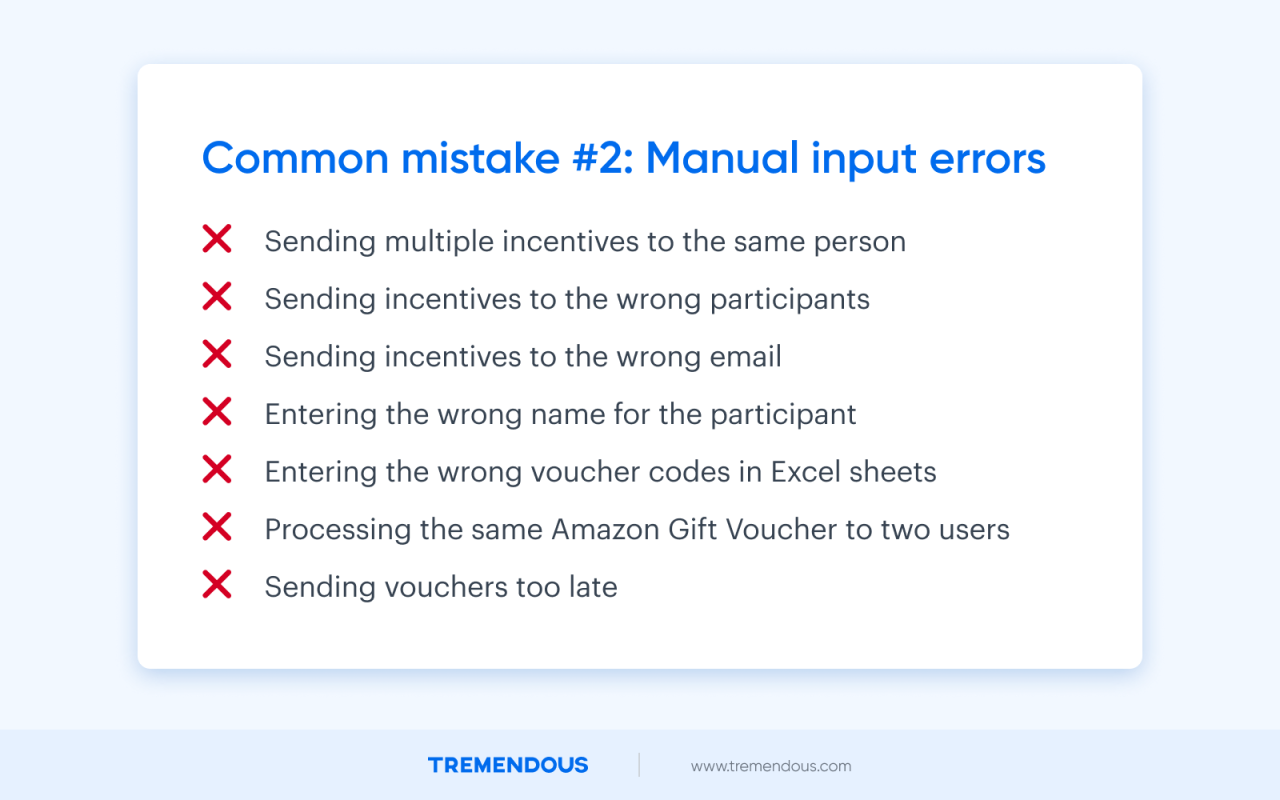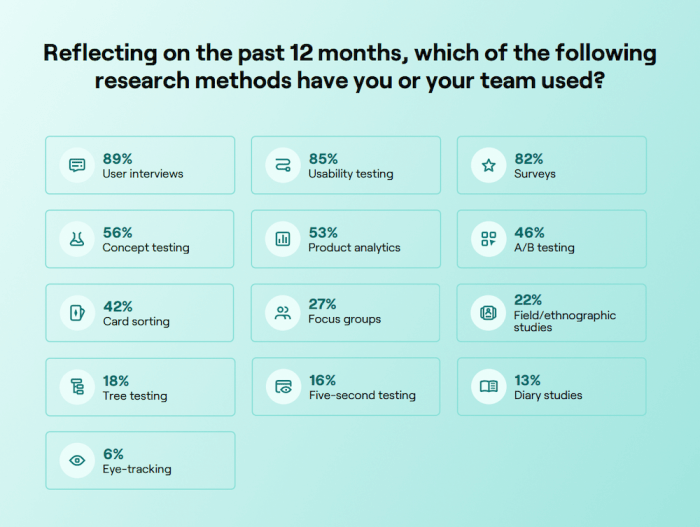Effective user research is crucial for creating successful products. However, even experienced researchers can fall prey to common pitfalls that lead to flawed designs and wasted resources. This exploration delves into nine frequent mistakes, offering insights and strategies to avoid them, ultimately improving the quality of your research and resulting product.
From overlooking diverse user needs to misinterpreting qualitative data, the path to insightful user research is often paved with challenges. Understanding these potential missteps is the first step towards conducting robust and effective research that truly informs your product development.
Ignoring Your Target Audience

Failing to understand your target audience is a critical flaw in user research, often leading to products that miss the mark entirely. A deep understanding of who will use your product and what their needs are is paramount to success. Ignoring this crucial step can result in wasted resources, frustrated users, and ultimately, product failure.
Understanding diverse user needs requires more than just a general idea of your target market. It necessitates creating detailed personas that represent the variety within your audience.
User Persona Examples
To illustrate the importance of understanding diverse user needs, let’s consider three distinct personas for a new fitness app:
Persona 1: The Busy Professional (Sarah): Sarah is a 35-year-old marketing manager with a demanding job and limited free time. She values efficiency and convenience. Her primary need is a quick, effective workout that can be easily integrated into her busy schedule. She prefers short, high-intensity interval training (HIIT) sessions and needs features like customizable workout durations and integration with her calendar.
Persona 2: The Fitness Enthusiast (Mark): Mark is a 28-year-old personal trainer with extensive fitness knowledge. He values data-driven insights and personalized training plans. He needs detailed tracking of his workouts, advanced metrics, and the ability to create and customize his own training programs. Integration with other fitness trackers and the ability to export data would be essential for him.
Persona 3: The Beginner (Emily): Emily is a 50-year-old retired teacher who is new to fitness. She values clear instructions, easy navigation, and a supportive community. She needs simple, beginner-friendly workout routines with detailed explanations and modifications for different fitness levels. A built-in community feature for encouragement and support would be crucial for her.
User Research Method: Conducting User Interviews
User interviews are a valuable method for ensuring accurate representation of diverse user groups. By conducting structured interviews with users from different segments, researchers can gather in-depth information about their needs, pain points, and expectations. This approach allows for exploration beyond pre-conceived notions and helps uncover unanticipated needs. The interviews should be tailored to each persona, focusing on their specific priorities and contexts. For example, questions for Sarah might focus on time constraints and workout preferences, while questions for Emily might emphasize ease of use and accessibility.
Examples of Product Failure Due to Neglecting User Segments
Ignoring specific user segments can lead to significant problems. The following table illustrates how neglecting particular user needs can result in product failure.
| User Segment | Neglected Need | Resulting Issue | Solution |
|---|---|---|---|
| Senior Citizens (Using a new banking app) | Accessibility features (large font sizes, voice control) | Low adoption rate, negative reviews citing difficulty of use | Incorporate accessibility features during design and development; conduct usability testing with senior citizens. |
| Visually Impaired Users (Using a navigation app) | Screen reader compatibility and alternative text descriptions | Inability to use the app, reliance on alternative methods | Ensure full screen reader compatibility and provide detailed alternative text for all visual elements. |
| Non-English Speakers (Using an e-commerce website) | Multilingual support and localized content | Lost sales opportunities, frustration among international customers | Translate website content into multiple languages and adapt it to local customs and preferences. |
Insufficient Sample Size and Bias

Gathering sufficient data from a representative group of users is crucial for reliable user research. Failing to do so can lead to inaccurate conclusions and flawed product designs. A poorly chosen sample size, coupled with the presence of bias, significantly impacts the validity and generalizability of research findings. Understanding the interplay between sample size and bias is essential for conducting effective user research.
The choice between a large or small sample size involves a trade-off between resources and accuracy. Large sample sizes offer greater statistical power, reducing the margin of error and increasing the confidence in the results. They allow for more detailed analysis and the identification of subtle trends within the user base. However, larger samples require more time, resources, and effort for recruitment and data analysis. Small sample sizes, on the other hand, are quicker and cheaper to manage, but they are more susceptible to sampling error and may not accurately reflect the broader user population. The optimal sample size depends on factors such as the desired level of precision, the variability within the population, and the resources available. For instance, a study investigating a niche product might require a smaller sample size than one exploring a mass-market application.
Large Versus Small Sample Sizes: A Comparison
Large sample sizes provide more precise estimates of population characteristics and reduce the likelihood of drawing misleading conclusions due to random sampling error. They also allow researchers to segment data and analyze subgroups within the population, revealing nuances that might be missed with smaller samples. However, managing large datasets can be challenging, and the increased cost and time investment may not always be justified. Small sample sizes are easier and cheaper to manage, but they are more vulnerable to sampling error and may not represent the entire user population accurately. This can lead to inaccurate generalizations and unreliable conclusions about user behavior and preferences. The decision of which sample size to use requires careful consideration of the research goals, available resources, and the acceptable level of uncertainty.
Common Biases in User Research
Several biases can skew user research results, leading to flawed interpretations. Addressing these biases is vital for ensuring the reliability of the findings.
- Confirmation Bias: This occurs when researchers subconsciously seek out or interpret data that confirms their pre-existing beliefs or hypotheses, while ignoring or downplaying contradictory evidence. Mitigation involves employing a structured research design, using objective data collection methods, and actively seeking out diverse perspectives and counterarguments.
- Sampling Bias: This arises when the sample does not accurately represent the target population. For example, recruiting participants primarily from a specific demographic group or location can lead to biased results. Mitigation strategies include using probability sampling techniques (like random sampling) to ensure every member of the population has an equal chance of being selected and employing stratified sampling to represent diverse subgroups proportionately.
- Survivorship Bias: This bias focuses on successful cases while ignoring unsuccessful ones, leading to skewed insights. For instance, focusing only on active users of an app while ignoring those who have churned can create an overly optimistic view of user satisfaction. Mitigation involves actively seeking out and including data from both successful and unsuccessful cases, ensuring a comprehensive understanding of user experiences.
Designing a Representative Sample for a Mobile App
To ensure a representative and unbiased sample for a hypothetical mobile app, a multi-pronged recruitment strategy is necessary. First, define the target audience clearly, specifying demographics (age, gender, location, income, etc.), tech-savviness, and app usage habits. Next, use a combination of recruitment methods to reach diverse participants. This might include online surveys distributed through social media and relevant online communities, partnering with user testing platforms to access a wider range of participants, and conducting in-person recruitment events in relevant locations. Furthermore, employ stratified sampling to ensure representation from key demographic subgroups within the target audience. Finally, carefully analyze the recruited sample to check for any imbalances and adjust the recruitment strategy as needed to ensure representativeness. For example, if the initial sample shows an overrepresentation of a particular demographic, additional efforts should be made to recruit participants from underrepresented groups to achieve a balanced and representative sample.
Misinterpreting Qualitative Data

Qualitative data, gathered through user interviews and usability testing, offers invaluable insights into user behavior and needs. However, its richness can also be a source of misinterpretation, leading to flawed product design decisions. Accurate analysis requires careful consideration of context, nuance, and the application of appropriate analytical methods. Failure to do so can result in products that fail to meet user expectations.
Misinterpreting qualitative data often stems from a lack of structured analysis and a tendency to focus on individual anecdotes rather than overarching themes. A rigorous approach is crucial to avoid drawing inaccurate conclusions and making poor design choices. This section explores methods for analyzing qualitative data and highlights the importance of context and nuance in interpretation.
Methods for Analyzing Qualitative Data
Several methods exist for effectively analyzing qualitative data from user interviews and usability testing. These approaches help researchers identify patterns, themes, and underlying user needs, minimizing the risk of misinterpretation. Employing multiple methods often provides a more comprehensive understanding.
- Thematic Analysis: This involves identifying recurring themes and patterns within the data. Researchers systematically code data segments, grouping them into meaningful categories based on shared characteristics. This process helps to distill key insights from large volumes of qualitative data.
- Content Analysis: This method focuses on identifying the frequency of specific words, phrases, or concepts within the data. It provides a quantitative dimension to qualitative data, highlighting the prominence of certain themes or opinions. Software tools can assist with this process, making it efficient for large datasets.
- Framework Analysis: This is a more structured approach that involves developing a pre-defined framework or set of categories based on existing research or hypotheses. Data is then coded and analyzed according to this framework, allowing for a more focused and targeted analysis. This is particularly useful when investigating specific research questions.
The Importance of Context and Nuance
Context and nuance are crucial elements in the interpretation of qualitative user feedback. A statement made out of frustration during a usability test might not reflect the user’s true opinion. Similarly, a single negative comment shouldn’t overshadow a larger trend of positive feedback. Researchers must consider the entire context of the interaction, including the user’s background, experience, and the specific situation in which the feedback was given.
Ignoring nuances can lead to misinterpretations. For instance, a user might say “the interface is confusing,” but further probing reveals their confusion stems from unfamiliar terminology, not the overall design. Addressing the terminology issue, rather than redesigning the entire interface, would be a more effective solution.
Hypothetical Scenario of Misinterpretation
Imagine a team developing a mobile banking app. During user testing, several participants expressed frustration with the multi-step process for transferring funds. A superficial interpretation might conclude users dislike the app’s functionality and push for a simplified, one-step process.
However, a deeper analysis reveals that the frustration stemmed primarily from unclear instructions and a lack of visual cues at each step. Many users were simply unsure of what information to input at each stage. Misinterpreting the feedback led the team to implement a streamlined but less secure, single-step transfer, potentially compromising user security. A more accurate interpretation, focusing on the underlying cause of frustration—poor instructional design—would have led to improvements in the clarity and visual guidance within the existing multi-step process, maintaining security while enhancing user experience.
Summary

By carefully considering and proactively avoiding these nine common user research mistakes, you can significantly enhance the reliability and impact of your findings. Remember, user-centered design is an iterative process; continuous learning and refinement are key to creating products that truly resonate with your target audience and achieve their intended goals. Prioritizing rigorous methodology and thoughtful interpretation ensures that your user research drives informed decisions, leading to more successful and user-friendly products.